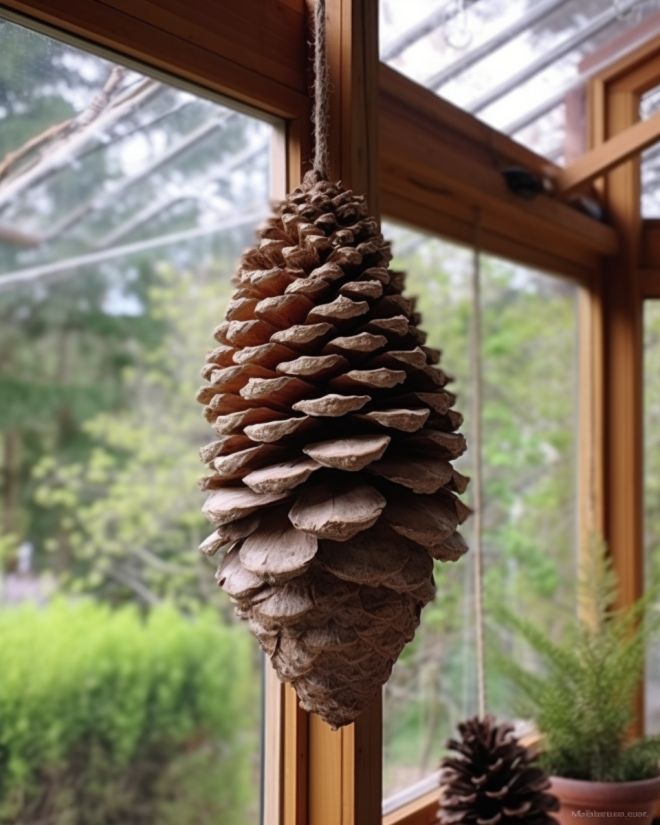Here’s why you should hang a pine cone near your garden
Throughout history, humans have sought various methods to predict the weather, from observing cloud formations to studying animal behavior. One lesser-known but intriguing technique involves using a humble pine cone.
By harnessing the natural properties of pine cones, gardeners can potentially gain insights into forthcoming weather patterns. In this article, we will explore the fascinating practice of hanging a pine cone to predict the weather and understand how to interpret the changes observed.

The Science Behind Pine Cone Weather Prediction:
The ability of pine cones to react to changes in humidity and atmospheric conditions forms the basis of this intriguing method of weather prediction. Pine cones are composed of scales that open and close in response to moisture levels. When the air is dry, the scales open to allow the release of seeds, but when humidity increases, the scales close up to protect the seeds.
Hanging a Pine Cone:
To embark on this weather prediction journey, gardeners can follow a simple process to hang a pine cone. Begin by finding a healthy pine cone, preferably one that has recently fallen from a tree. It is crucial to choose a cone that is fully intact and not damaged.
Next, attach a string or thread to the base of the pine cone, ensuring it is secure. The length of the string can vary, but it should be long enough to suspend the pine cone freely. Ideally, find a spot outdoors, such as a porch or a tree branch, where the pine cone can hang undisturbed.
Interpreting the Pine Cone’s Reactions:
Now that you have hung the pine cone, it’s time to observe and interpret any changes it undergoes. Remember that this method is not foolproof, but it can provide interesting insights into the atmospheric conditions.
Open Scales: If the scales of the pine cone remain open for an extended period, it suggests dry weather conditions. Open scales indicate low humidity and are often associated with sunny days.
Closed Scales: When the scales of the pine cone close tightly, it signifies an increase in humidity or moisture in the air. This can be an indication of incoming rain, snow, or foggy conditions.
Oscillation: Sometimes, the pine cone may exhibit oscillatory behavior, with the scales opening and closing intermittently. This oscillation typically occurs during transitional weather phases, such as the shift from dry to humid or vice versa.
No Visible Change: It is also possible that the pine cone remains relatively unchanged for an extended period. In such cases, it may indicate a stable weather pattern, neither too dry nor too humid.
Remember, interpreting the pine cone’s reactions requires patience and observation. Weather prediction is a complex phenomenon, and relying solely on a pine cone may not provide definitive accuracy. It is always advisable to complement this method with conventional weather forecasting tools.
1 Comment
[…] RELATED READING: Here’s why you should hang a pine cone near your garden […]